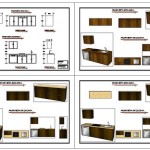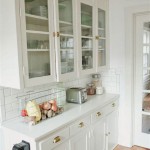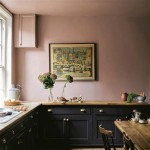Custom Maple Cabinets Cost Per Square Foot in the USA
The cost of custom maple cabinets per square foot in the United States is a complex calculation influenced by numerous factors. Maple is a popular choice for cabinetry due to its durability, attractive grain patterns, and ability to accept a variety of stains and finishes. Understanding the elements contributing to the final price empowers consumers to make informed decisions and budget effectively for their kitchen or bathroom renovation projects.
The objective of this article is to provide a detailed overview of the average costs associated with custom maple cabinets per square foot in the USA, dissecting the key factors that influence pricing and offering insights into how to optimize cabinet design and material choices to align with budgetary constraints.
Understanding the Base Material Cost: Maple Wood
Maple wood itself is a significant component of the overall cost. The price of maple lumber fluctuates based on supply and demand, region of origin, and grade. Generally, maple is considered a mid-range hardwood in terms of cost, falling between softer woods like pine and more premium hardwoods like cherry or walnut. There are variations within maple itself; for example, hard maple (also known as sugar maple) is denser and more expensive than soft maple (red maple).
The grade of the maple lumber also impacts the price. Higher grades, such as Select and Better, have fewer knots and blemishes, resulting in a cleaner, more uniform appearance. These higher grades command a premium price compared to lower grades, which may contain more imperfections and require more extensive preparation before finishing. Cabinet makers often use higher grades for visible areas like doors and drawer fronts, while lower grades may be suitable for internal components.
The sustainability of the maple wood source is another factor that can affect cost. Lumber harvested from responsibly managed forests and certified by organizations like the Forest Stewardship Council (FSC) may be slightly more expensive but represents a commitment to environmentally conscious practices. Consumers seeking eco-friendly options should inquire about the origin and certification of the maple lumber used in their cabinets.
Beyond the cost of the raw lumber, the milling and processing of the wood also contribute to the final price. This includes tasks like kiln drying, planing, and cutting the lumber to the required dimensions for cabinet construction. The efficiency and technology employed by the cabinet maker in these processes can impact the overall cost.
Labor and Manufacturing Processes
The labor involved in designing, building, and installing custom maple cabinets is a substantial cost driver. Custom cabinets are not mass-produced; they are crafted to specific dimensions and design preferences, requiring skilled craftsmanship and careful attention to detail. The hourly rate for experienced cabinet makers varies depending on their location, expertise, and the complexity of the project.
The manufacturing process itself involves several distinct stages, each contributing to the overall cost. These stages include: design and drafting, material selection and procurement, cutting and shaping the wood components, assembling the cabinet boxes, constructing doors and drawers, applying finishes, and hardware installation.
The complexity of the design significantly impacts labor costs. Intricate designs with detailed carvings, custom moldings, or specialized hardware require more time and skill to execute, increasing the overall price. Simpler, more streamlined designs can help to reduce labor costs without compromising the quality or functionality of the cabinets.
The type of joinery used in cabinet construction also affects labor costs. Dovetail joints, for example, are known for their strength and durability, but they require more time and skill to create than simpler joints like butt joints or pocket screw joints. The choice of joinery should be carefully considered based on the desired level of durability and the budget constraints.
Finishing is another labor-intensive process that significantly impacts the final cost. Applying stains, paints, or clear coats requires multiple coats, sanding between coats, and careful attention to detail to achieve a professional-looking finish. The type of finish chosen also affects the cost, with more durable and specialized finishes typically commanding a higher price.
Hardware, Finishes, and Design Complexity
The selection of hardware, finishes, and the overall design complexity are significant determinants of the final cost per square foot of custom maple cabinets. Hardware encompasses knobs, pulls, hinges, drawer slides, and other functional components that contribute to the cabinet's usability and aesthetic appeal.
High-end hardware made from premium materials like stainless steel, brass, or custom-designed pieces can significantly increase the cost. Conversely, standard, off-the-shelf hardware options are more budget-friendly. A strategic approach involves selecting high-quality hardware for frequently used areas like door pulls and drawer fronts, while opting for more economical options for less visible components.
The type of finish applied to the maple cabinets also affects the price. Staining enhances the natural beauty of the wood grain, while painting provides a wider range of color options. Clear coats protect the wood from moisture and wear. More specialized finishes, such as glazed finishes, distressed finishes, or multi-tone finishes, require additional steps and expertise, resulting in a higher cost.
The design complexity plays a crucial role in the overall pricing. Cabinets with intricate moldings, custom carvings, or unique layouts require more time and skill to fabricate, increasing the labor costs. Consider simplifying the design by opting for cleaner lines, fewer decorative elements, and standard cabinet configurations to reduce expenses without sacrificing functionality or style.
Glass inserts in cabinet doors, pull-out shelves, and other specialized features add to the cost. While these features can enhance convenience and organization, they require additional materials and labor to install. Carefully evaluate the necessity and value of these features to determine if they align with the budget.
The size and layout of the kitchen or bathroom also influence the cost per square foot. Larger kitchens with more cabinets will naturally have a higher overall cost, but the cost per square foot may be lower due to economies of scale. Smaller kitchens with custom-designed cabinets may have a higher cost per square foot due to the increased complexity of fitting cabinets into a limited space.
The geographical location of the project also affects the cost due to variations in labor rates, material prices, and transportation costs. Areas with a higher cost of living generally have higher labor rates for cabinet makers. Similarly, the availability and cost of maple lumber may vary depending on the region of the country.
Therefore, the cost of custom maple cabinets per square foot in the USA is fluid and determined by a confluence of factors, including the type and grade of maple wood, labor rates, hardware selections, finishing techniques, design complexity, and geographical location. A realistic understanding of these factors is crucial for informed decision-making and effective budget management.

How Much Do Custom Cabinets Cost

How Much Does A Maple Shaker Style Cabinet Door Cost

Custom Kitchen Cabinets Cost Breakdown For 2025 Palm Beach Premier Remodeling

How Much Do Custom Cabinets Cost Authentic Cabinetry

Kitchen Cabinet S And Costs Explained

Buy Mason Maple Natural Custom Kitchen Cabinet Cliqstudios

White Shaker Maple Wood Cabinet Factory Cabinets

Chestnut Maple Wood Cabinet Factory Kitchen Cabinets

How Much Do Custom Cabinets Cost Breaking It Down

Average Cost For Kitchen Cabinets Cabinet Now








